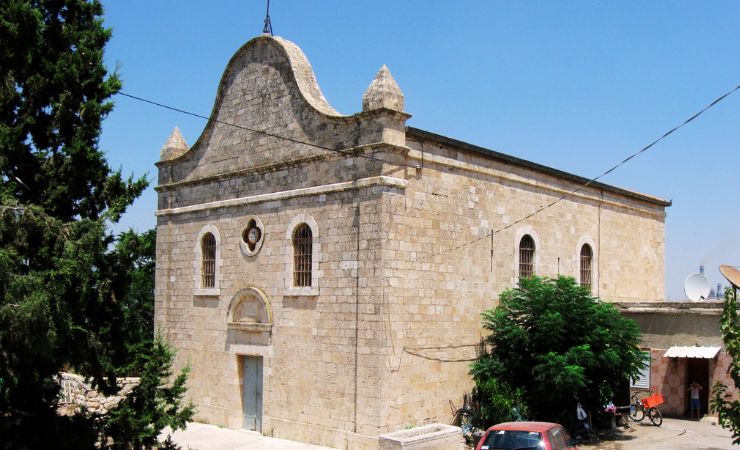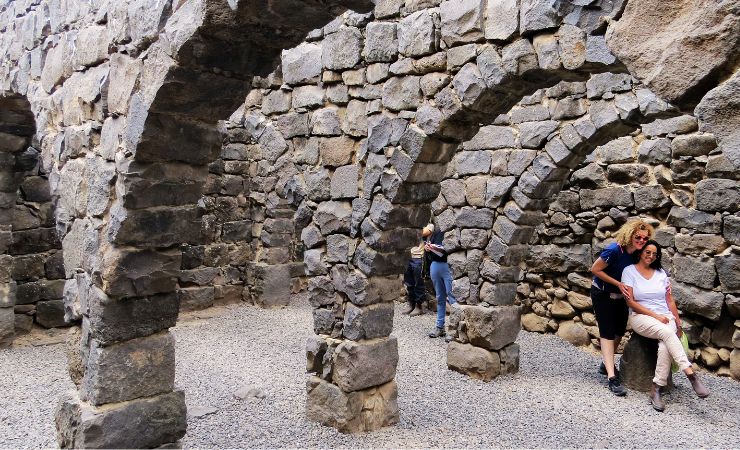Nein: Jesus Resurrects the Widow's Son
The Church in Nein, officially known as the Church of the Resurrection of the Widow’s Son, is a significant religious edifice affiliated with the Roman Catholic Church. It stands in the village of Nein, located in northern Israel. The church is dedicated to the resurrection of the son of the widow, a miracle performed by Jesus as described in the Bible.

Location of the Church of the Resurrection of the Widow's Son
The church is situated in the central part of the village of Na’in, on the northern slope of Mount Moreh, which is 515 meters above sea level, in the Lower Galilee region of northern Israel.
Its scenic location on a hill that offers a panoramic view of the surrounding landscapes, approximately four miles from Mount Tabor and twenty-five miles southwest of Capernaum.
Biblical context
Nein is mentioned in the Gospel of Luke 7:11–17. As Jesus approached the town, He encountered a funeral procession. The deceased was a young man, the only son of a widow. Observing the grieving mother, Jesus was moved with compassion. He approached the bier, touched it, and commanded the young man to arise. Miraculously, the young man sat up, alive, and began to speak. This astounding event left the onlookers in awe, leading many to glorify God. The news of this miracle spread rapidly throughout the region.
The significance of this event is manifold:
- Demonstration of Jesus’ Power: The miracle showcased Jesus’ divine authority over life and death.
- Compassion of Christ: Jesus’ act was driven by compassion for the grieving widow, emphasizing His empathetic nature.
- Foreshadowing of Resurrection: The raising of the widow’s son can be seen as a precursor to the resurrection of Jesus Himself.



Origin of the Church at Nein
The exact origins of the church trace back to between the fourth and fifth centuries, marking it as one of the ancient Christian structures in the region. This age indicates that the church was likely constructed either by early Christian pilgrims or by local Christian communities. As a result of this miracle and the church’s establishment, the town of Nain swiftly became a pivotal Christian pilgrimage destination.
The original church was likely built by early Christian pilgrims or local Christian communities. The town of Nain soon became a Christian pilgrimage destination due to its biblical significance. In 1881, the Franciscans took over the site. They constructed the contemporary temple on the foundations of the old church.
In 2013, there was an attempt to start renovation work on the church. However, the work was interrupted by local Arab groups. Fortunately, in December 2019, it was announced that the church would be reopening after the completion of the renovations. Additionally, there are plans to establish a small convent for the Franciscan friars in the area.
Inside, it features two artworks, a column, and a stone sarcophagus. While there are hints of remnants connected to the miracle narrated in Luke 7, definitive evidence like homes, stone caskets, or the mentioned gate and walls from the funeral procession are yet to be uncovered. Excavations at the site have revealed a structure from the Mamluk era (13th-14th century CE) and a handful of artifacts from the Roman and Byzantine era (1st-7th century CE).

Sources and Additional Reading
Wikipedia – Nein
Nearby Sites
- Mount Tabor: A prominent biblical hill, traditionally recognized as the site of the Transfiguration of Jesus.
- Nazareth: The childhood home of Jesus, home of the Basilica of the Annunciation, Mary’s Well, and proximal to Mount Precipice.
- Jezreel Valley: A vast, fertile plain with historical significance, often referred to as the breadbasket of Israel.
- Megiddo: An ancient city with layers of ruins, believed to be the site of the future battle of Armageddon.
- Sepphoris: An archaeological site with well-preserved mosaics, once a major city in Galilee.
- The Wedding Church at Cana: Traditionally recognized as the site where Jesus performed his first miracle, turning water into wine.



